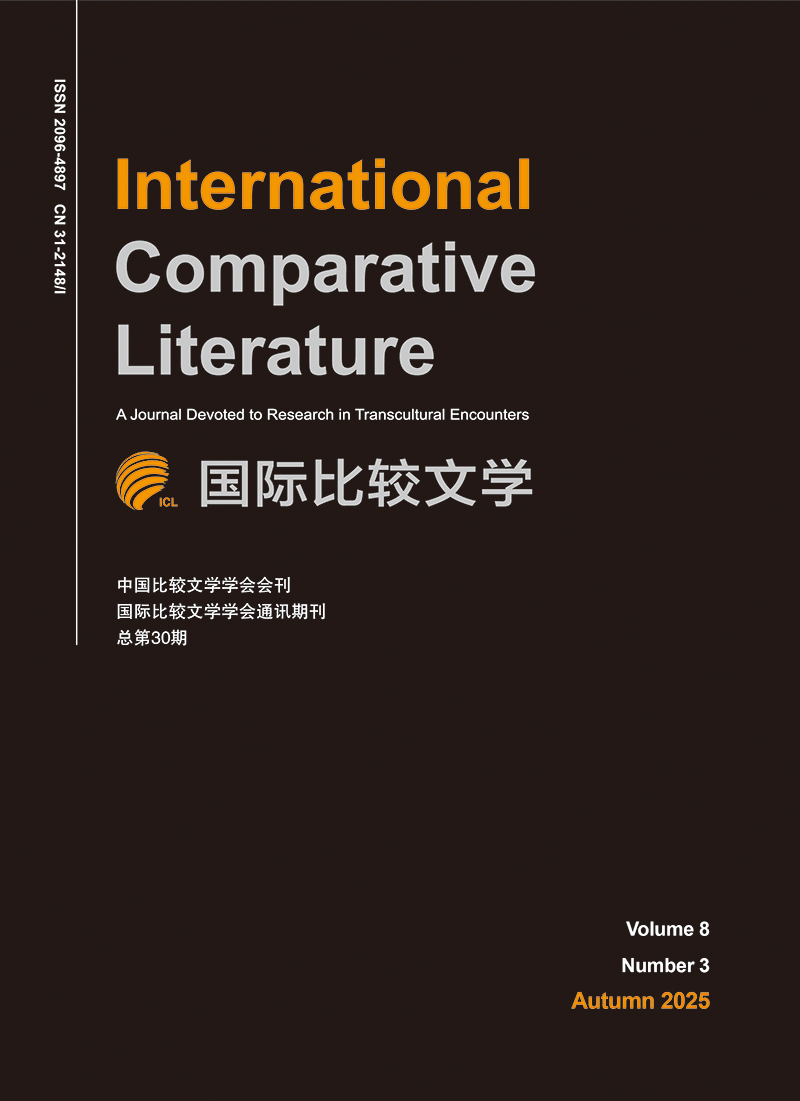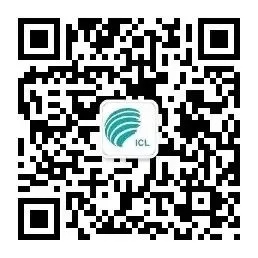|
[1]
|
卜玉梅:《网络民族志的田野工作析论及反思》,《民族研究》2020年第2期,第69~85页。
|
|
[2]
|
[BU Yumei.“Wangluo minzu zhi de tianye gongzuo xilun ji fansi”(Analysis of and Reflection on the Fieldwork of Netnography). Minzu yanjiu(Ethno-National Studies)2(2020):69-85.]
|
|
[3]
|
曹顺庆:《三重话语霸权下的少数民族文学研究》,《民族文学研究》2005年第3期,第5~10页。
|
|
[4]
|
[CAO Shunqing.“Sanchonghuayu baquan xia de shaoshuminzu wenxue yanjiu”(The Study of Minority Literature under the Triple Discourse Hegemony). Minzuwenxue yanjiu(Studies of Ethnic Literature)3(2005):5-10.]
|
|
[5]
|
——:《比较文学论》,成都:四川教育出版社,2002年。
|
|
[6]
|
[——. Bijiaowenxue lun(On Comparative Literature). Chengdu:Sichuan Education Press,2002.]
|
|
[7]
|
(德)恩斯特·卡西尔:《神话思维》,黄龙保等译,北京:中国社会科学出版社,1992 年。
|
|
[8]
|
[Cassirer,Ernst. Shenhuasiwei(Mythical Thought). Translated by HUANG Baolong,et al. Beijing:China Social Sciences Publishing House,1992.]
|
|
[9]
|
陈寅恪:《金明馆丛稿二编》,上海:生活·读书·新知三联书店,2001年。
|
|
[10]
|
[CHEN Yinque. Jinming guancong gao erbian(Jinming Pavilion Series 2). Shanghai:SDX Joint Publishing Company,2001.]
|
|
[11]
|
陈惇、谢天振、孙景尧主编:《比较文学》(第三版),北京:高等教育出版社,2014年。
|
|
[12]
|
[CHEN Dun,XIE Tianzhen and SUN Jingyao. Bijiaowenxue(Comparative Literature). Beijing:Higher Education Press,2014.]
|
|
[13]
|
(美)詹姆斯·克利福德、乔治·E·马库斯编:《写文化——民族志的诗学与政治学》,高丙中等译,北京:商务印书馆,2006 年。
|
|
[14]
|
[Clifford,James,and George Marcus. Xiewenhua—minzuzhi de shixue yu zhengzhi(Writing Culture—The Poetics and Politics of Ethnography). Edited and translated by GAO Bingzhong. Beijing:The Commercial Press,2006.]
|
|
[15]
|
代云红:《新时期以来中国文学人类学的历史与展望》,《文学人类学研究》第一辑,北京:社会科学文献出版社,2018年。
|
|
[16]
|
[DAI Yunhong.“Xinshiqi yilai zhongguo wenxuerenleixue de lishi zhanwang”(Historical Prospects of Chinese Literary Anthropology since the New Era). In Wen xue renleixue yanjiu. Vol. 1(Literary Anthropological Research. Vol. 1). Beijing:Social Sciences Academic Press,2018.]
|
|
[17]
|
(美)卡罗尔·R.恩贝尔、梅尔文·恩贝尔:《文化人类学》,王晴锋译,北京:商务印书馆,2021年。
|
|
[18]
|
[Ember,Carol R. and Melvin Ember. Wenhua renleixue(Cultural Anthropology). Translated by Wang Qingfeng. Beijing:The Commercial Press,2021.]
|
|
[19]
|
冯骥才:《发现〈亚鲁王〉》,《当代贵州》2012年第21期,第51页。
|
|
[20]
|
[FENG Jicai.“Faxian〈King Yalu〉”(Discovering〈King Yalu〉). Dangdai Guizhou(Guizhou Today)21(2012):51.]
|
|
[21]
|
(美)克利福德·格尔兹:《文化的解释》,韩莉译,南京:译林出版社,2014年。
|
|
[22]
|
[Geertz,Clifford. Wenhua de jieshi(The Interpretation of Cultures). Translated by Han Li. Nanjing:Yilin Press,2014.]
|
|
[23]
|
李永平:《众妙之门:神话编码中的隐蔽秩序》,《上海交通大学学报(哲学社会科学版)》2020年第6期,第 69~74页。
|
|
[24]
|
[LI Yongping.“Zhongmiaozhimen:shenhua bianma zhong de yinbizhixu”(Gate of All Wonders:Hidden Order in Mythical Code). Shanghaijiaotong daxue xuebao(Journal of Shanghai Jiaotong University[Philosophy and Social Sciences])6(2020):69-74.]
|
|
[25]
|
——:《文化大传统的文学人类学视野》,陕西:陕西师范大学出版总社,2019年。
|
|
[26]
|
[——. Wenhua dachuantong de wenxuerenleixue shiye(The Literary Anthropology Perspective of the Great Cultural Tradition). Shaanxi:Shaanxi Normal University Press,2019.]
|
|
[27]
|
——:《“大闹”:“热闹”的内在结构与文化编码》,《民族艺术》2019年第1期,第34~42页。
|
|
[28]
|
[——.“‘Danao’:‘renao’de neizaijiegou yu wenhua bianma”(“Danao”[Great Jollification]:The Internal Structure and Cultural Code of“Nao[Jollification]”). Minzuyishu(National Arts)1(2019):34-42.]
|
|
[29]
|
——:《媒介接引对文学人类学学科发展的贡献》,《文学人类学研究》第一辑,北京:社会科学文献出版社, 2018年。
|
|
[30]
|
[——.“Meijie jieyin dui wenxuerenleixue xuekefazhan de gongxian”(The Contribution of Media to the Development of Literary Anthropology). Wen xue renleixue yanjiu. Vol. 1(Literary Anthropological Research. Vol. 1). Beijing:Social Sciences Academic Press,2018.]
|
|
[31]
|
李永平、李泽涛:《从阈限书写进入:文学人类学研究的一个视角》,《中国比较文学》2022年第1期,第 169~186页。
|
|
[32]
|
[LI Yongping and LI Zetao.“Cong yuxianshuxie jinru:wenxuerenleixue yanjiu de yige shijiao”(Entering from Liminal Writing:A Perspective of Literary Anthropology Research). Zhongguobijiaowenxue(Comparative Literature in China)1(2022):169-86.]
|
|
[33]
|
——:《文学人类学理论与实践》,北京:中国社会科学出版社,2021年。
|
|
[34]
|
[——. Wenxue renleixue lilun yu shijian(Literary Anthropology Theory and Practice). Beijing:China Social Sciences Publishing House,2021.]
|
|
[35]
|
李永平、赵周宽:《文学人类学的新阶段与新思考——陕西师范大学博士生导师李永平教授访谈》,《社会科学家》2021年第11期,第3~9页。
|
|
[36]
|
[LI Yongping and ZHAO Zhoukuan.“Wenxuerenleixue de xinjieduan yu xinsikao—shanxishifandaxue boshishengdaoshi liyongping jiaoshou fangtan”(The New Stage and New Thinking of Literary Anthropology—An Interview with Prof. Li Yongping,Doctoral Supervisor of Shaanxi Normal University). Shehui kexuejia(Social Scientist)11(2021):3-9.]
|
|
[37]
|
刘莉、陈星灿:《中国考古学:旧石器时代晚期到早期青铜时代》,上海:生活·读书·新知三联书店,2017年。
|
|
[38]
|
[LIU Li and CHEN Xingcan. Zhongguo kaoguxue:jiushiqi shidai wanqi dao zaoqi qingtongshidai(Chinese Archaeology:Late Paleolithic to Early Bronze Age). Shanghai:SDX Joint Publishing Company,2017.]
|
|
[39]
|
孟华:《符号学的三重证据法及其在证据法学中的应用》,《证据科学》2008年第2期,第16~26页。
|
|
[40]
|
[MENG Hua.“Fuhaoxue de sanchongzhengjufa jiqi zai zhengjufaxue zhong de yingyong”(Tri-Fold Evidence Methodology in Semiotics and Its Application in Law of Evidence). Zhengju kexue(Evidence Science)2(2008):16-26.]
|
|
[41]
|
宁琦:《社会需求与新文科建设的核心任务》,《上海交通大学学报(哲学社会科学版)》2020年第2期,第 13~17页。
|
|
[42]
|
[NING Qi.“Shehuixuqiu yu xinwenke jianshe de hexinrenwu”(Social Demand and Core Tasks in Construction of New Liberal Arts). Shanghaijiaotongdaxue xuebao(Journal of Shanghai Jiaotong University[Philosophy and Social Sciences])2(2020):13-17.]
|
|
[43]
|
彭兆荣:《文学人类学:一种新型的人文学》,《吉首大学学报(社会科学版)》2021年第1期,第99~105页。
|
|
[44]
|
[PENG Zhaorong.“Wenxuerenleixue:yizhong xinxing de renwenxue”(Literary Anthropology:A New Type of Humanities). Jishoudaxue xuebao(Journal of Jishou University[Social Sciences])1(2021):99-105.]
|
|
[45]
|
——:《文学民族志:一种学科协作的方法论范式》,《青海社会科学》2020年第3期,第96~103页。
|
|
[46]
|
[——.“Wenxue minzuzhi:yizhong kexuexiezuo de fangfalun fanshi”(Literary Ethnography:A Methodological Paradigm for Disciplinary Collaboration). Qinghai shehui kexue(Qinghai Social Sciences)3(2020):96-103.]
|
|
[47]
|
——:《首届中国文学人类学研讨会综述》,《文艺研究》1998 年第 2 期,第150~152页。
|
|
[48]
|
[——.“Shoujie zhongguowenxuerenleixue yantaohui zongshu”(A Review of the First Symposium on Chinese Literary Anthropology). Wenyi yanjiu(Literature & Art Studies)2(1998):150-152.]
|
|
[49]
|
彭兆荣、赖景执:《存在与超越——论人类学的中国范式》,《西北民族研究》2022年第3期,第83~94页。
|
|
[50]
|
[PENG Zhaorong and LAI Jingzhi.“Cunzai yu chaoyue—lun renleixue de zhongguofanshi”(Existence and Transcendence—On the Chinese Paradigm of Anthropology). Xibei minzuyanjiu(Journal of Northwestern Ethnic Studies)3(2022):83-94.]
|
|
[51]
|
彭兆荣、杨娇娇:《乡土的表述 永远的秦腔——贾平凹小说〈秦腔〉的人类学解读》,《暨南学报》2019 年第 4 期,第2~9页。
|
|
[52]
|
[PENG Zhaorong and YANG Jiaojiao.“Xiangtu de biaoshu yongyuande qinqiang—Jia Pingwa xiaoshuo Qinqiang de renleixue jiedu”(The Everlasting Qinqiang Opera:An Anthropological Interpretation of the Novel Qinqiang Opera by Jia Pingwa). Jinan xuebao(Jinan Journal[Philosophy and Social Sciences]) 4(2019):2-9.]
|
|
[53]
|
钱乘旦:《文科为什么要交叉——兼论知识发展的一般规律》,《文化纵横》2020年第5期,第130~136页。
|
|
[54]
|
[QIAN Chengdan.“Wenke weishenme yao jiaocha—jianlun zhishi fazhan de yibanguilv”(Why Should Liberal Arts Intersect—and on the Regular Pattern of Knowledge Development). Wenhua zongheng(Beijing Cultural Review)5(2020):130-36.]
|
|
[55]
|
(美)罗伯特·雷德菲尔德:《农民社会与文化—人类学对文明的一种诠释》,王莹译 ,北京:中国社会科学出版社,2013年。
|
|
[56]
|
[Redfield,Robert. Nongminshehui yu wenhua—renleixue dui wenming de yizhong quanshi(Peasant Society and Culture:An Anthropological Appoach to Civilization). Translated by WANG Ying. Beijing:China Social Sciences Publishing House,2013.]
|
|
[57]
|
阮云星、高英策:《赛博格人类学:信息时代的“控制论有机体”隐喻与智识生产》,《开放时代》2020年第1期,第162~175页。
|
|
[58]
|
[RUAN Yunxing and GAO Yingce.“Saiboge renleixue:xinxishidai de‘kongzhilun youjiti’yinyu yu zhishi shengchan”(Cyborg Anthropology:The Metaphor of Cybernetic Organism and Intellectual Knowledge Production in the Information Age). Kaifangshidai(Open Times)1(2020):162-75.]
|
|
[59]
|
苏永前:《20 世纪前期中国文学人类学研究述要》,《湖北民族学院学报(哲学社会科学版)》2017 年第 3期,第126~130页。
|
|
[60]
|
[SU Yongqian.“20shiji qianqi zhongguo wenxuerenleixue yanjiu shuyao”(A Summary of Chinese Literary Anthropology Research in the Early 20th Century). Hubei minzu xueyuan xuebao(Journal of Hubei University for Nationalities)3(2017):126-30.]
|
|
[61]
|
谭佳:《整合与创新:中国文学人类学研究七十年》,《中国文学批评》2019年第3期,第23~29页。
|
|
[62]
|
[TAN Jia.“Zhenghe yu chuangxin:zhongguo wenxuerenleixue yanjiu qishinian”(Integration and Innovation:Review of Studies of Literary Anthropology in China in 70 Years). Zhongguo wenxuepiping(Chinese Journal of Literary Criticism)3(2019):23-29.]
|
|
[63]
|
谭佳、韩鼎、李川:《早期中国与神话历史研究——关于文学人类学“四重证据法”的对话》,《文艺研究》 2020年第7期,第91~100页。
|
|
[64]
|
[TAN Jia,HAN Ding and LI Chuan.“Zaoqi zhongguo yu shenhualishi yanjiu—guanyu wenxuerenleixue‘si chongzhengjufa’de duihua”(Early China and the History of Mythology—A Dialogue on the“Quadruple Evidence Method”in Literary Anthropology). Wenyi yanjiu(Literature & Art Studies)7(2020):91-100.]
|
|
[65]
|
唐启翠、叶舒宪编著:《文学人类学新论——学科交叉的两大转向》,上海:复旦大学出版社,2019年。
|
|
[66]
|
[TANG Qicui and YE Shuxian. Wenxue renleixue xinlun—xueke jiaocha de liangda zhuanxiang(New Theory of Literary Anthropology—Two Turns of Interdisciplinary Intersection). Shanghai:Fudan University Press,2019.]
|
|
[67]
|
(法)阿诺尔德·范热内普:《过渡礼仪》,张举文译,北京:商务印书馆,2010 年。
|
|
[68]
|
[Van Gennep,Arnold. Guodu liyi(Les rites de passage). Translated by ZHANG Juwen. Beijing:The Commercial Press,2010.]
|
|
[69]
|
王艳:《文学民族志的概念、方法及实践——一个跨学科的文体实验》,《青海社会科学》2020年第3期,第 104~109页。
|
|
[70]
|
[WANG Yan.“Wenxueminzuzhi de gainian,fangfa ji shijian—yige kuaxueke de wentishiyan”(The Concept,Method and Practice of Literary Ethnography—An Interdisciplinary Stylistic Experiment). Qinghai shehuikexue(Qinghai Social Sciences)3(2020):104-9.]
|
|
[71]
|
吴持哲编:《诺思洛普·弗莱文论选集》,北京:中国社会科学出版社,1998年。
|
|
[72]
|
[WU Chizhe. Northrop Frye wenlunxuan(Northrop Frye:Selected Essays). Beijing:China Social Sciences Press,1998.]
|
|
[73]
|
萧兵:《四十年,惊鸿一瞥》,《文学人类学研究》第一辑,北京:社会科学文献出版社,2018年。
|
|
[74]
|
[XIAO Bing.“Sishinian,jinghongyipie”(Forty Years at a Glimpse). Wen xue renleixue yanjiu. Vol. 1(Literary Anthropological Research. Vol. 1). Beijing:Social Sciences Academic Press,2018.]
|
|
[75]
|
徐新建:《人类学与数智文明》,《西北民族研究》2021年第4期,第50~59页。
|
|
[76]
|
[XU Xinjian.“Renleixue yu shuzhiwenming”(Anthropology and Digital Intelligence Civilization). Xibeiminzu yanjiu(Journal of Northwestern Ethnic Studies)4(2021):50-59.]
|
|
[77]
|
——:《生死两界“送魂歌”——〈亚鲁王〉研究的几个问题》,《民族文学研究》2014年第1期,第74~90页。
|
|
[78]
|
[——.“Shengsi laingjie‘songhunge’—〈King Yalu〉yanjiu de jige wenti”(“Song of Sending Souls”in the Two Realms of Life and Death—Several Problems in the Study of〈King Yalu〉). Minzuwenxue yan jiu(Studies of Ethnic Literature)1(2014):74-90.]
|
|
[79]
|
——:《“多民族文学史观”简论》,《民族文学研究》2007年第2期,第12~18页。
|
|
[80]
|
[——.“‘Duominzuwenxueshiguan’jianlun”(A Brief Discussion on“Multi-ethnic Literary History Views”). Minzuwenxue yanjiu(Studies of Ethnic Literature)2(2007):12-18.]
|
|
[81]
|
叶舒宪:《物证优先:四重证据法与“玉成中国三部曲”》,《国际比较文学》2020年第3期,第415~437页。
|
|
[82]
|
[YE Shuxian.“Wuzhengyouxian:sichong zhengjufa yu‘yuchengzhongguo sanbuqu’”(Material Evidence Priority:Quadruple Evidence Method and the“Jade-Making China Trilogy”). Guoji bijiaowenxue(International Comparative Literature)3(2020):415-37.]
|
|
[83]
|
——:《羌人尚白与夏人尚黑——文化文本研究的四重证据法示例》,《文学人类学研究》第一辑,北京:社会科学文献出版社,2018年。
|
|
[84]
|
[——.“Qiangren shang bai yu Xiaren shang hei—wenhuawenben yanjiu de sichognzhengjufa shili”(Qiang People Advocate White and Xia People Advocate Black—Example of Quadruple Evidence Method in Cultural Text Research). Wen xue renleixue yanjiu. Vol. 1(Literary Anthropological Research. Vol. 1).Beijing:Social Sciences Academic Press,2018.]
|
|
[85]
|
——:《文化与符号经济》,广州:广东人民出版社,2012年。
|
|
[86]
|
[——. Wenhua yu fuhaojingji(Culture and Symbolic Economy). Guangzhou:Guangdong People's Publishing House,2012.]
|
|
[87]
|
——:《金枝玉叶—比较神话学的中国视角》,上海:复旦大学出版社,2012年。
|
|
[88]
|
[——. Jinzhiyuye—bijiaoshenhuaxue de zhongguoshijiao(Golden Branches and Jade Leaves:A Chinese Perspective of Comparative Mythology). Shanghai:Fudan University Press,2012.]
|
|
[89]
|
——:《文学人类学教程》,北京:中国社会科学出版社,2010年。
|
|
[90]
|
[——. Wenxue renleixue jiaocheng(Literary Anthropology:A Course Book). Beijing:China Social Sciences Publishing House,2010.]
|
|
[91]
|
——:《文学人类学的中国化过程与四重证据法——学术史的回顾及展望》,《社会科学战线》2010年第6期,第109~125页。
|
|
[92]
|
[——.“Wenxuerenleixue de zhongguohua guocheng yu sichognzhengjufa—xueshushi de huigu ji zhanwang”
|
|
[93]
|
(The Sinicization Process of Literary Anthropology and the Quadruple Evidence Method—A Review and Prospect of Academic History). Shehui kexue zhanxian(Social Science Front)6(2010):109-25.]
|
|
[94]
|
——:《玉教与儒道思想的神话根源——探索中国文明发生期的“国教”》,《民族艺术》2010年第3期,第 83~91页。
|
|
[95]
|
[——.“Yujiao yu rudaosixiang de shenhuagenyuan—tansuo zhongguowenming fashengqi de‘guojiao’”
|
|
[96]
|
(The Mythical Roots of Jade Religion and Confucianism and Taoism—Exploring the‘State Religion’in the Age of Chinese Civilization”). Minzu yishu(National Arts)3(2010):83-91.]
|
|
[97]
|
——:《中国圣人神话原型新考——兼论作为国教的玉宗教》,《武汉大学学报》2010年第3期,第277~286页。
|
|
[98]
|
[——.“Zhongguo shengren shenhua yuanxing xinkao—jianlun zuowei guojiao de yuzongjiao”(New Research on the Prototype of Chinese Sage Myths—Also on the Jade Religion as the State Religion). Wuhandaxue xuebao(Wuhan University Journal)3(2010):277-86.]
|
|
[99]
|
——:《中国的神话历史——从“中国神话”到“神话中国”》,《百色学院学报》2009年第1期,第33~37页。
|
|
[100]
|
[——.“Zhongguo de shenhualishi—cong‘zhongguoshenhua’dao‘shenhuazhongguo’”(Chinese History of Myths—From Chinese Myths to Mythological China). Baisexueyuan xuebao(Journal of Baise University)1(2009):33-37.]
|
|
[101]
|
——:《文学中的灾难与救世》,《文化学刊》2008年第4期,第14~23页。
|
|
[102]
|
[——.“Wenxue zhong de zainan yu jiushi”(Disaster and Salvation in Literature). Wenhuaxuekan(Culture Journal)4(2008):14-23.]
|
|
[103]
|
叶舒宪、孙梦迪:《人类学的文学转向:从肯尼思·伯克到格尔兹》,《中南民族大学学报》2016年第4期,第 170~175页。
|
|
[104]
|
[YE Shuxian and SUN Mengdi.“Renleixue de wenxuezhuanxiang:cong Kenneth Burke dao Geertz”(The Literary Turn in Anthropology:From Kenneth Burke to Geertz). Zhongnan minzu daxue xuebao(Journal of South-Central University for Nationalities)4(2016):170-75.]
|
|
[105]
|
叶舒宪 、章米力、柳倩月编:《文化符号学——大小传统新视野》,陕西:陕西师范大学出版社,2013年。
|
|
[106]
|
[YE Shuxian,ZHANG Mili and LIU Qianyue. Wenhuafuhaoxue—daxiaochuantong xin shiye(Cultural Semiotics:A New Vision of Big and Small Traditions). Shaanxi:Shaanxi Normal University Press,2013.]
|

 点击查看大图
点击查看大图



 下载:
下载:

